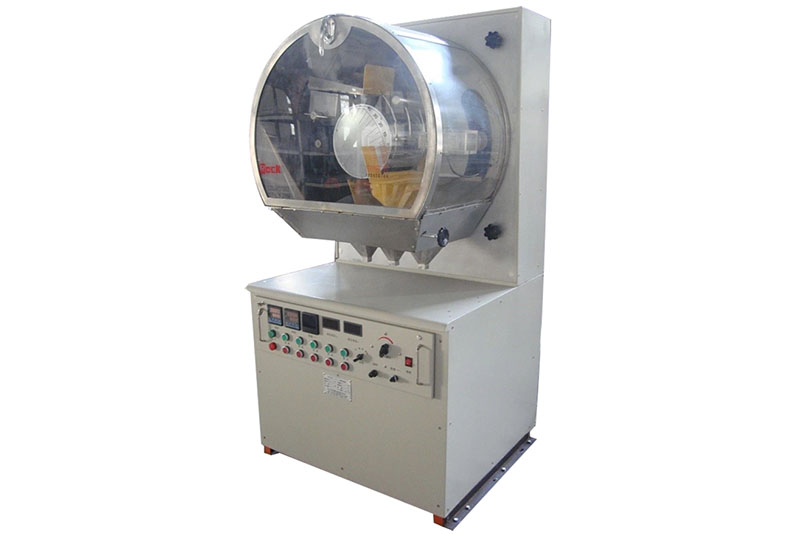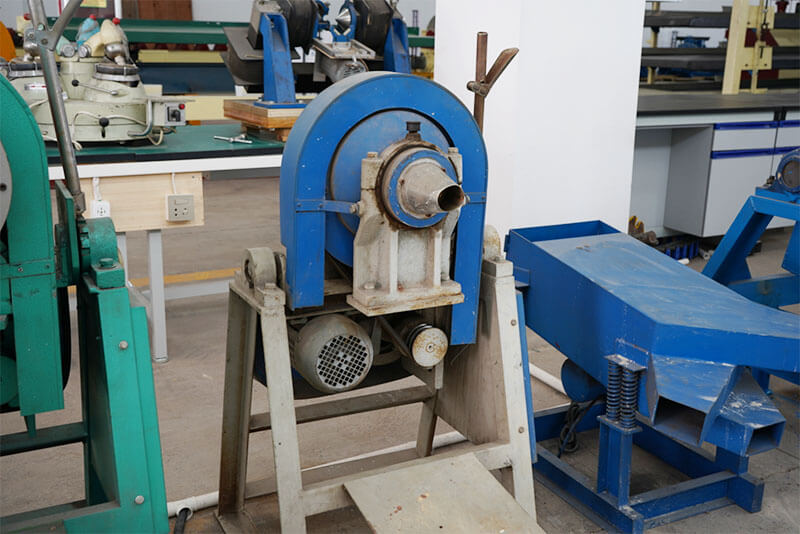Tungsten is a strategic metal, critical for its unparalleled hardness, high melting point, and density. It’s essential in everything from cutting tools and mining equipment to aerospace and defense. However, this valuable metal never found in its pure form. It locks within specific ores, and unlocking its potential requires a precise beneficiation process that always starts with comprehensive laboratory testing. This guide explores the fundamentals of tungsten ore and the essential steps to process it.
What is Tungsten Ore?
Tungsten ore is a rock containing economically recoverable concentrations of tungsten. It’s not a single mineral but is primarily hosted in one of two key minerals:
- Wolframite Series: A solution of Ferberite (FeWO₄) and Hübnerite (MnWO₄). It is typically black, magnetic, and very dense.
- Scheelite (CaWO₄): The other primary source, known for its distinctive fluorescence under short-wave UV light, where it glows bluish-white.
These valuable minerals are bound within a gangue of waste rock, commonly quartz, calcite, and various sulfides. The primary goal of beneficiation is to separate the tungsten minerals from the gangue as efficiently as possible.
The Tungsten Beneficiation Process
The journey from run-of-mine ore to a high-grade concentrate (often >65% WO₃) involves a multi-stage process tailored to the ore’s mineralogy.
- Comminution (Crushing & Grinding): The ore is progressively crushed and ground to a fine powder to “liberate” the individual tungsten mineral grains from the waste rock. This is the most critical step for downstream recovery.
- Gravity Concentration: Due to their high density, both wolframite and scheelite are ideal candidates for gravity separation. This cost-effective method uses density differences to concentrate the heavy tungsten minerals.
Key Equipment: Jig separators, spiral concentrators, and shaking tables.

- Froth Flotation: For finer particles or ores where gravity is insufficient, use flotation. It is particularly common for scheelite, which can be hard to separate from calcite and fluorite using gravity alone. The process uses specific chemicals (collectors and depressants) to make the tungsten minerals float.
- Magnetic & Electrostatic Separation: These are for final cleaning steps.
Magnetic Separation can remove magnetic impurities (like iron oxides) or separate weakly magnetic wolframite from non-magnetic scheelite.
Electrostatic Separation helps remove conductive minerals.
Conducting a Lab Tungsten Beneficiation Test
A well-designed lab test program is the blueprint for a successful full-scale operation. It de-risks the project and defines the optimal process flow sheet.
The testing follows a logical sequence.
Phase 1: Ore Characterization
You must understand what you are processing. It involves:
- Chemical Assaying to determine the head grade (WO₃ %).
- Mineralogy (XRD/SEM) to identify all minerals present.
- Liberation Analysis to determine the optimal grind size to free the tungsten grains.
Phase 2: Beneficiation Test Work
Based on characterization, test a preliminary flow sheet.
- Gravity Tests are run on laboratory shaking tables at various grind sizes.
- Flotation Tests in lab-scale cells optimize reagent types, dosages, and pH levels.
Phase 3: Flowsheet Development
All test products are weighed and assayed to calculate mass pulls, recoveries, and upgrade ratios. This data will define the final process flow sheet.
Essential Lab Equipment for Tungsten Ore Testing
A properly equipped mineral processing laboratory is the nerve center for flowsheet development. For tungsten, the equipment list is designed to handle its high density and complex mineralogy. Here’s a detailed breakdown of the essential equipment and its specific role:
1. Sample Preparation & Comminution Suite:
- Jaw Crusher: A robust workhorse for primary crushing, reducing the bulk sample to -10 mm. A sturdy steel-frame jaw crusher is essential for handling tungsten ores.
- Roll Crusher: Used for secondary crushing, providing a controlled size reduction with minimal dust generation, producing a product ideal for feeding a pulverizer or a lab-scale mill.
- Laboratory Pulverizer: A disk or ring mill pulverizer can grind a small sub-sample of the ore to fine powder (often -75 microns) to create a homogeneous sample for accurate chemical assay and mineralogical analysis.
- Laboratory Ball Mill / Rod Mill: This is critical for grindability studies and preparing feed for separation tests. The mill, filled with steel balls or rods, tumbles the ore to simulate the industrial grinding circuit. Determining the correct grind size for liberation is one of the testwork’s primary objectives.
2. Gravity Separation Station:
- Laboratory Shaking Table: This is the essential gravity separation unit for tungsten. It provides a crisp separation by exploiting small differences in density and particle size. Operators can visually assess the separation efficiency and collect multiple products (concentrate, middlings, and tailings) for analysis. Models like the Wilfley Table are industry standards.
- Spiral Concentrator (Lab Scale): Useful for initial scoping studies and bulk pre-concentration to quickly upgrade a large volume of sample before more precise tabling.
- Jig separator (Lab Scale): Effective for pre-concentration at a coarser particle size, removing easy-to-liberate tungsten particles early in the process, which can significantly reduce the load on the grinding and fine separation circuits.
3. Froth Flotation Rig:
- Laboratory Flotation Machine: A bank of 1 to 8 cells (typically 1-5 liters in volume) is non-negotiable for scheelite and complex wolframite ores. These mechanically agitated cells precisely control air flow, impeller speed, and froth depth. Key tests conducted here include:
- Reagent Optimization: Testing collectors (e.g., fatty acids for scheelite), depressants (e.g., sodium
silicate for quartz), and pH modifiers.
Kinetic Tests: Determining how long the minerals need to float. - Locked-Cycle Tests: Simulating a continuous plant operation by re-circulating middling products.
4. Physical Separation & Analysis Tools:
- Magnetic Separator: A Davis Tube Tester or a high-intensity rare-earth roll magnetic separator is vital.
Purify a wolframite concentrate by removing weakly magnetic contaminants.
Separate wolframite from scheelite in mixed ore types.
Remove iron oxides from any final concentrate. - Electrostatic Separator: A lab-scale plate or roll separator can help clean concentrates by repelling non-conductive tungsten minerals from conductive sulfide minerals like pyrite.
Short-Wave Ultraviolet (UV) Lamp: an indispensable, low-tech tool specifically for scheelite. It allows for quick visual identification of scheelite in core samples, crushed products, and concentrates, confirming the presence and grade of the mineral instantly.
5. Support and Analytical Equipment:
- Drying Ovens: Thermostatically controlled ovens can dry all process products (concentrates and tailings) to a constant weight for accurate mass measurement.
- Precision Analytical Balances: High-precision balances (0.001g accuracy) are crucial for generating reliable mass recovery data.
- Sieve Shakers and Full Sieve Stack: A complete set of ASTM standard sieves is used for particle size analysis (PSA) to monitor grind size and liberation.
Conclusion
The path to a profitable tungsten operation begins not at the mine, but in the laboratory. A systematic approach to ore characterization and beneficiation testing is non-negotiable. By defining the optimal process at a small scale with the right equipment, you de-risk your project, maximize metallurgical recovery, and lay the foundation for an efficient and economically viable processing plant. Investing in thorough lab work is the first and most critical step in unlocking the value of your tungsten deposit.
JXSC lab mineral processing equipment manufacturer has more than 38 years of experience in mining processing. We provide various lab mining equipment including gravity-separating equipment for processing minerals such as gold, tin, tungsten, lead, zinc, tantalum, niobium, iron, manganese, silver, titanium-iron, etc. Lab machines include laboratory jaw crusher, hammer crusher, roller crusher, grinding equipment, lab gravity separator, screening, washing equipment, etc. Welcome to consult!



